The Water Cycle
by Mr. Rojas
How much water covers Earth’s surface?
Almost 70% ( 7/10 )
Earth’s surface is made up of both land and water. Why is Earth often called the “water planet”?
Earth’s Water
Fresh Water
Frozen in Ice Caps
& Glaciers (a little over
2% of all of Earth’s water)
Underground
(less than 1% of all
of Earth’s water)
In Air, Soil, Rivers,
& Freshwater Lakes
(very small amount)
Fact: Drinking water is also called freshwater
About 97% of Earth’s water supply is salt water that is found in oceans and seas. Only 3% is fresh water that humans and other living things need to survive.
Glaciers & Ice Caps
One major problem is that much of Earth’s fresh water supply is not available for everyday use. About two-thirds (2/3) of this fresh- water is “locked away” as ice in glaciers and polar ice caps. That leaves less than one percent of Earth’s total water supply as fresh water that people can drink, cook and grow food.
What is the Water Cycle?
The water cycle is: The transferring of water from the Earth’s surface to the atmosphere and back, in a never-ending cycle.
It is also known as the “hydrologic cycle”.
But one thing about water doesn’t change. There is only a certain amount of water on Earth—no more, no less—and that total doesn’t change.
Water Cycle Animated Online
http://earthguide.ucsd.edu/earthguide/diagrams/watercycle/index.html
Evaporation
- Evaporation happens when liquid water is changed to water vapor (invisible gas) thanks to the power of the sun's heat , and rises up towards the sky.
- Water evaporates from the oceans (mainly), lakes, rivers, soil and plants.
Condensation
Condensation is the change of water vapor into liquid drops which come together to form clouds. This happens high up in the atmosphere, where the air is cooler.
How do Clouds Form?
- Clouds form when evaporated water (water vapor) rises to higher altitudes where the air is cooler. As this cooling occurs, the water vapor condenses (comes together) from a vapor to a liquid. When many tiny water droplets form near each other, a cloud is form.
- Conditions have to be just right for clouds to form. Nature needs tiny droplets of water, something for the droplets to cling to (particles like dust, salt, or smoke) and the right temperature (cooler).
Key Ingredients
for Clouds to Form:
Lots of water vapor
temperatures
something for the
droplets to cling
to (i.e: dust particles)
Precipitation
Online: How Precipitation Works
- Precipitation is any form of water that falls from clouds. Precipitation comes in four forms: rain, snow, sleet, or hail. What decides which form it will come down as is dependent on the temperature and even on wind conditions.
- When cloud drops come together, they start to get heavy, so gravity returns the water to the Earth’s surface as precipitation – usually rain.
- Precipitation that sinks into the ground is called groundwater .
- Precipitation that runs off Earth’s surface into rivers, lakes, and oceans is called runoff .
Precipitation falls in four forms:
rain, snow, sleet (frozen rain), or hail.
Song: The Water Cycle Runs Always
www.rrojas.com/home/rojassongs/thewatercyclesong
Online: The Water Cycle Interactive
http://www.harcourtschool.com/activity/science_up_close/508/deploy/interface.html
What Makes Oceans Salty?
- Most of the salts and other substances in the ocean come from the land.
- As rivers, streams, and runoff flow over the land, they slowly break down the rocks that make it up.
- Over time, flowing water carries substances (such as minerals) from the rocks to the oceans where these collect. This is what makes oceans salty.
Online: Water Flow to Oceans
http://activities.macmillanmh.com/science/ca/scienceinmotion/Common/SIM.html?Module=../Grade5/Chapter4-MountainWaterFlow/
How do Living Things Give Water �Back to their Environment?
Animals return water to the environment:
- as they give off water vapor when they exhale (respiration)
- as they sweat (perspiration)
- as they urinate (urination)
Plants return water to the environment:
- as they give off water, a waste-product of photosynthesis, through their stomata (transpiration)
How does water change through the water cycle as it goes from place to place?
- It changes from liquid, to gas (water vapor), and back to liquid (as in rain) again.
- But sometimes the water vapor may change to a solid instead of a liquid (as in snow, sleet, or hail), depending on the temperature.
(water vapor)
Online: Fresh Water Resources
http://activities.macmillanmh.com/science/ca/grade5/g5_ch4_ls3_ereview.html

Hydrologic Cycle
The water cycle describes how water is exchanged (cycled) through Earth's land, ocean, and atmosphere.
Earth Science, Meteorology, Geography, Physical Geography, Geology
Loading ...

The water cycle describes how water is exchanged (cycled) through Earth's land, ocean, and atmosphere. Water always exists in all three phases, and in many forms—as lakes and rivers , glaciers and ice sheets , oceans and seas, underground aquifers , and vapor in the air and clouds .
Evaporation , Condensation , and Precipitation
The water cycle consists of three major processes: evaporation, condensation, and precipitation.
Evaporation
Evaporation is the process of a liquid's surface changing to a gas. In the water cycle, liquid water (in the ocean, lakes, or rivers) evaporates and becomes water vapor.
Water vapor surrounds us, as an important part of the air we breathe. Water vapor is also an important greenhouse gas . Greenhouse gases such as water vapor and carbon dioxide insulate Earth and keep the planet warm enough to maintain life as we know it. Increasing amounts of greenhouse gases in the atmosphere also contribute to global warming.
The water cycle 's e vaporation process is driven by the sun. As the sun interacts with liquid water on the surface of the ocean, the water becomes an invisible gas (water vapor ). E vaporation is also influenced by wind , temperature , and the density of the body of water.
Condensation
Condensation is the process of a gas changing to a liquid. In the water cycle, water vapor in the atmosphere condenses and becomes liquid.
Condensation can happen high in the atmosphere or at ground level. Clouds form as water vapor condenses, or becomes more concentrated (dense). Water vapor condenses around tiny particles called cloud condensation nuclei (CCN) . CCN can be specks of dust, salt, or pollutants . Clouds at ground level are called fog or mist.
Like e vaporation , condensation is also influenced by the sun. As water vapor cools, it reaches its saturation limit, or dew point . Air pressure is also an important influence on the dew point of an area.
Precipitation
As is the case with evaporation and condensation, precipitation is a process. Precipitation describes any liquid or solid water that falls to Earth as a result of condensation in the atmosphere. Precipitation includes rain, snow, and hail.
Fog is not precipitation. The water in fog does not condense sufficiently to precipitate, or liquefy and fall to Earth. Fog and mist are a part of the water cycle called suspensions: They are liquid water suspended in the atmosphere.
Precipitation is one of many ways water is cycled from the atmosphere to the earth or ocean.
Other Processes
Evaporation, condensation, and precipitation are important parts of the water cycle. However, they are not the only ones.
Runoff , for instance, describes a variety of ways liquid water moves across land. Snowmelt , for example, is an important type of runoff produced as snow or glaciers melt and form streams or pools.
Transpiration is another important part of the water cycle . Transpiration is the process of water vapor being released from plants and soil. Plants release water vapor through microscopic pores called stomata . The opening of stomata is strongly influenced by light, and so is often associated with the sun and the process of e vaporation . Evapotranspiration is the combined components of e vaporation and transpiration , and is sometimes used to evaluate the movement of water in the atmosphere.
States of Water
Through the water cycle, water continually circulates through three states: solid, liquid, and vapor.
Ice is solid water. Most of Earth's fresh water is ice, locked in massive glaciers, ice sheets, and ice caps .
As ice melts, it turns to liquid. The ocean, lakes, rivers, and underground aquifers all hold liquid water.
Water vapor is an invisible gas. Water vapor is not evenly distributed across the atmosphere. Above the ocean, water vapor is much more abundant, making up as much as four percent of the air. Above isolated deserts, it can be less than one percent.
The Water Cycle and Climate
The water cycle has a dramatic influence on Earth's climate and ecosystems .
Climate is all the weather conditions of an area, evaluated over a period of time. Two weather conditions that contribute to climate include humidity and temperature . These weather conditions are influenced by the water cycle .
Humidity is simply the amount of water vapor in the air. As water vapor is not evenly distributed by the water cycle, some regions experience higher humidity than others. This contributes to radically different climates. Islands or coastal regions, where water vapor makes up more of the atmosphere, are usually much more humid than inland regions, where water vapor is scarcer.
A region's temperature also relies on the water cycle . Through the water cycle , heat is exchanged and temperatures fluctuate . As water e vaporates , for example, it absorbs energy and cools the local environment. As water condenses, it releases energy and warms the local environment.
The Water Cycle and the Landscape
The water cycle also influences the physical geography of Earth. Glacial melt and erosion caused by water are two of the ways the water cycle helps create Earth's physical features.
As glaciers slowly expand across a landscape , they can carve away entire valleys , create mountain peaks, and leave behind rubble as big as boulders. Yosemite Valley , part of Yosemite National Park in the U.S. state of California, is a glacial valley . The famous Matterhorn, a peak on the Alps between Switzerland and Italy, was carved as glaciers collided and squeezed up the earth between them. Canada's "Big Rock" is one of the world's largest " glacial erratics ," boulders left behind as a glacier advances or retreats.
Glacial melt can also create landforms . The Great Lakes , for example, are part of the landscape of the Midwest of the United States and Canada. The Great Lakes were created as an enormous ice sheet melted and retreated, leaving liquid pools.
The process of erosion and the movement of runoff also create varied landscapes across Earth's surface. Erosion is the process by which earth is worn away by liquid water, wind, or ice.
Erosion can include the movement of runoff. The flow of water can help carve enormous canyons, for example. These canyons can be carved by rivers on high plateaus (such as the Grand Canyon, on the Colorado Plateau in the U.S. state of Arizona). They can also be carved by currents deep in the ocean (such as the Monterey Canyon, in the Pacific Ocean off the coast of the U.S. state of California).
Reservoirs and Residence Time
Reservoirs are simply where water exists at any point in the water cycle. An underground aquifer can store liquid water, for example. The ocean is a reservoir. Ice sheets are reservoirs. The atmosphere itself is a reservoir of water vapor.
Residence time is the amount of time a water molecule spends in one reservoir. For instance, the residence time of "fossil water," ancient groundwater reservoirs, can be thousands of years.
Residence time for water in the Antarctic ice sheet is about 17,000 years. That means that a molecule of water will stay as ice for about that amount of time.
The residence time for water in the ocean is much shorter—about 3,200 years.
The residence time of water in the atmosphere is the shortest of all—about nine days.
Calculating residence time can be an important tool for developers and engineers. Engineers may consult a reservoir's residence time when evaluating how quickly a pollutant will spread through the reservoir, for instance. Residence time may also influence how communities use an aquifer.
Breaking the Cycle The water cycle can change. Glacial retreat is the process in which glaciers melt faster than their ice can be replaced by precipitation. Glacial retreat limits the amount of fresh water available on Earth. We are experiencing the fastest rate of glacial retreat in recorded history.
Articles & Profiles
Media credits.
The audio, illustrations, photos, and videos are credited beneath the media asset, except for promotional images, which generally link to another page that contains the media credit. The Rights Holder for media is the person or group credited.
Last Updated
October 19, 2023
User Permissions
For information on user permissions, please read our Terms of Service. If you have questions about how to cite anything on our website in your project or classroom presentation, please contact your teacher. They will best know the preferred format. When you reach out to them, you will need the page title, URL, and the date you accessed the resource.
If a media asset is downloadable, a download button appears in the corner of the media viewer. If no button appears, you cannot download or save the media.
Text on this page is printable and can be used according to our Terms of Service .
Interactives
Any interactives on this page can only be played while you are visiting our website. You cannot download interactives.
Related Resources

What Is the Water Cycle?
Water can be found all over Earth in the ocean, on land and in the atmosphere. The water cycle is the path that all water follows as it moves around our planet.
Credit: NASA/JPL-Caltech Data source: NASA's Earth Observatory
On Earth, you can find water in all three states of matter: solid , liquid and gas . Liquid water is found in Earth’s oceans, rivers, lakes, streams—and even in the soil and underground. Solid ice is found in glaciers , snow, and at the North and South Poles . Water vapor—a gas—is found in Earth’s atmosphere.
How does water travel from a glacier to the ocean to a cloud? That’s where the water cycle comes in.
The Water Cycle
Credit: NASA/JPL-Caltech
The Sun’s heat causes glaciers and snow to melt into liquid water. This water goes into oceans, lakes and streams. Water from melting snow and ice also goes into the soil. There, it supplies water for plants and the groundwater that we drink.
Snow falling on a glacier during winter months usually replaces any water that melts away in the summer. However, due to Earth’s overall warming , most glaciers today are losing more ice than they regain, causing them to shrink over time.
How does water get into the atmosphere? There are two main ways this happens:
- Heat from the Sun causes water to evaporate from oceans, lakes and streams. Evaporation occurs when liquid water on Earth’s surface turns into water vapor in our atmosphere.
- Water from plants and trees also enters the atmosphere. This is called transpiration .
Warm water vapor rises up through Earth’s atmosphere. As the water vapor rises higher and higher, the cool air of the atmosphere causes the water vapor to turn back into liquid water, creating clouds. This process is called condensation .
When a cloud becomes full of liquid water, it falls from the sky as rain or snow—also known as precipitation . Rain and snow then fill lakes and streams, and the process starts all over again.
Clouds, like these over the savannah in Nairobi, Kenya, form when water vapor in the atmosphere condenses back into liquid water. Credit: Department of State
Why Do We Care About the Water Cycle?
We care about the water cycle because water is necessary for all living things. NASA satellites orbiting Earth right now are helping us to understand what is happening with water on our planet.

Water in the Soil
Humans need water to drink, and to water the plants that grow our food. NASA has a satellite called SMAP —short for Soil Moisture Active Passive —that measures how much water is in the top 2 inches (5 cm) of Earth’s soil . This can help us understand the relationship between water in the soil and severe weather conditions, such as droughts.
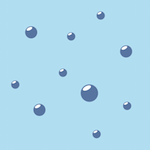
Water in the Atmosphere
NASA’s CloudSat mission studies water in our atmosphere in the form of clouds. CloudSat gathers information about clouds and how they play a role in Earth’s climate. Also, the international satellite called the Global Precipitation Measurement Mission (GPM) observes when, where and how much it rains and snows on Earth.

Water in the Oceans
As Earth’s climate becomes warmer, land ice at the North and South Poles starts melting. The water then flows into the ocean, causing sea level to rise. NASA’s Jason-3 mission—short for Joint Altimetry Satellite Oceanography Network-3 —orbits Earth collecting information about sea level and ocean temperature. This helps track how the ocean responds to Earth’s changing climate.
NASA is also tracking how Earth’s water moves all around our planet. This is the work of the GRACE-FO —or Gravity Recovery and Climate Experiment-Follow On —mission. It tracks the movement of water from one month to the next, and can even measure changes in deep groundwater hundreds of feet below Earth’s surface.
NASA’s Aqua satellite also collects a large amount of information about Earth’s water cycle, including water in the oceans, clouds, sea ice, land ice and snow cover.
Related NASA Missions

If you're seeing this message, it means we're having trouble loading external resources on our website.
If you're behind a web filter, please make sure that the domains *.kastatic.org and *.kasandbox.org are unblocked.
To log in and use all the features of Khan Academy, please enable JavaScript in your browser.
Middle school Earth and space science - NGSS
Course: middle school earth and space science - ngss > unit 3, the water cycle.
- Understand: the water cycle
Key points:
- The water cycle describes how water continuously moves between Earth’s surface and the atmosphere.
- Water moves into the atmosphere from oceans, lakes, and streams by evaporation . During evaporation, water changes from liquid water to water vapor (a gas).
- Water also moves into the atmosphere by transpiration , or the evaporation of water from plants. Both evaporation and transpiration are driven by the sun’s energy.
- Water forms clouds in the atmosphere by condensation . During condensation, water changes from water vapor to liquid water.
- Water falls down to Earth’s surface by precipitation . This process is driven by gravity. Of the water that reaches land, some flows downhill as runoff and some soaks into the ground to become groundwater .
Want to join the conversation?
- Upvote Button navigates to signup page
- Downvote Button navigates to signup page
- Flag Button navigates to signup page

An official website of the United States government
Official websites use .gov A .gov website belongs to an official government organization in the United States.
- Education home
- About NOAA Education
- NOAA in your backyard: Alaska
- NOAA in your backyard: Caribbean
- NOAA in your backyard: Central
- NOAA in your backyard: Great Lakes
- NOAA in your backyard: Gulf of Mexico
- NOAA in your backyard: Mid-Atlantic
- NOAA in your backyard: Northeast
- NOAA in your backyard: Northwest
- NOAA in your backyard: Pacific Islands
- NOAA in your backyard: Southeast
- NOAA in your backyard: Southwest
- Educational mailing lists
- Oct-Dec 2023
- Jul-Sep 2023
- Apr-Jun 2023
- Jan-Mar 2023
- NOAA Sea to Sky: Education resource database
- Ocean acidification
- Ocean currents
- Ocean floor features
- Ocean pollution and marine debris
- El Niño and La Niña
- Space weather
- Weather observations
- Weather systems & patterns
- Carbon cycle
- Changing seasons
- Climate change impacts
- Climate data monitoring
- Aquatic food webs
- Coral reef ecosystems
- Fisheries and seafood
- Life in an estuary
- Marine mammals
- Sea turtles
- Great Lakes ecoregion
Water cycle
- Watersheds, flooding, and pollution
- Data resources for educators
- Education at home
- Elementary resources
- Hands-on science activities
- Special topics
- Conference resources
- About the education resource collections
- Conservation Service Corp Act Direct Hiring Authority
- Educator opportunities
- Grants & networks
- News and stories
Keep exploring
Find even more resources on the water cycle in our searchable resource database.
The water cycle is often taught as a simple circular cycle of evaporation, condensation, and precipitation. Although this can be a useful model, the reality is much more complicated. The paths and influences of water through Earth’s ecosystems are extremely complex and not completely understood. NOAA is striving to expand understanding of the water cycle at global to local scales to improve our ability to forecast weather, climate, water resources, and ecosystem health.
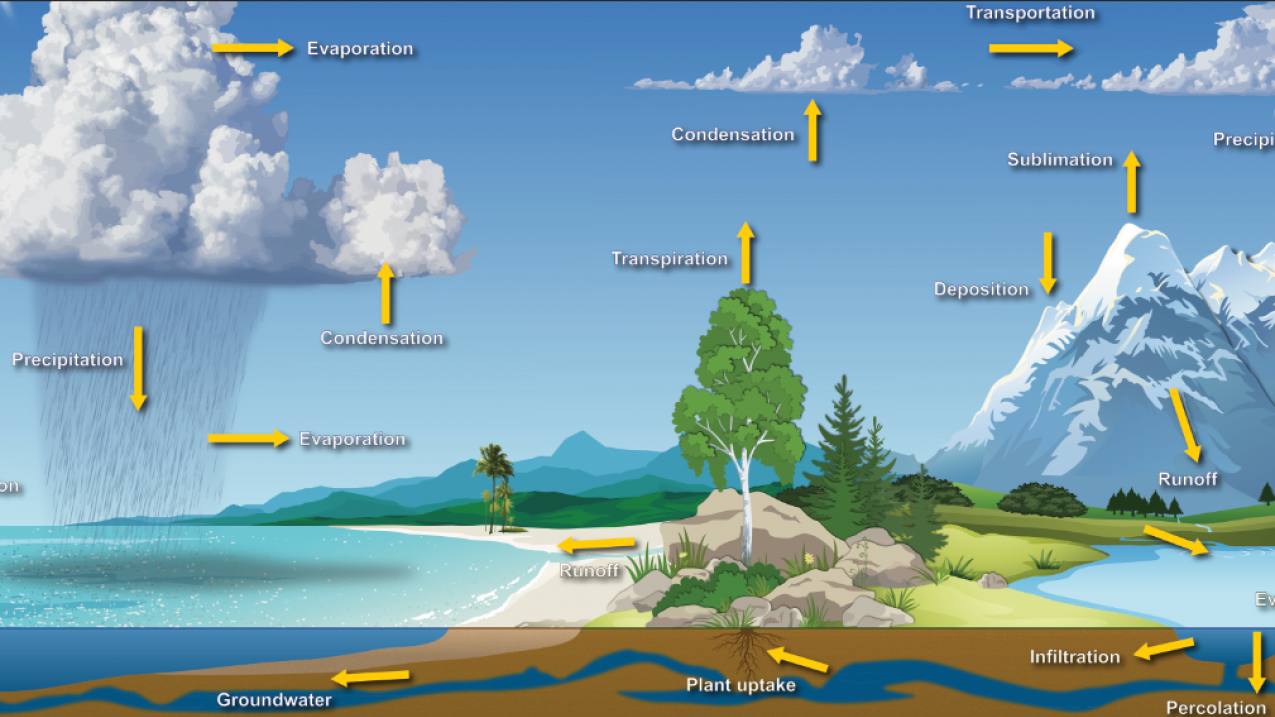
The water cycle. (Image credit: Dennis Cain/NWS)
The water cycle on Earth
Water is essential to life on Earth. In its three phases (solid, liquid, and gas), water ties together the major parts of the Earth’s climate system — air, clouds, the ocean, lakes, vegetation, snowpack offsite link , and glaciers offsite link .
The water cycle shows the continuous movement of water within the Earth and atmosphere. It is a complex system that includes many different processes. Liquid water evaporates into water vapor, condenses to form clouds, and precipitates back to earth in the form of rain and snow. Water in different phases moves through the atmosphere (transportation). Liquid water flows across land (runoff), into the ground (infiltration and percolation), and through the ground (groundwater). Groundwater moves into plants (plant uptake) and evaporates from plants into the atmosphere (transpiration). Solid ice and snow can turn directly into gas (sublimation). The opposite can also take place when water vapor becomes solid (deposition).
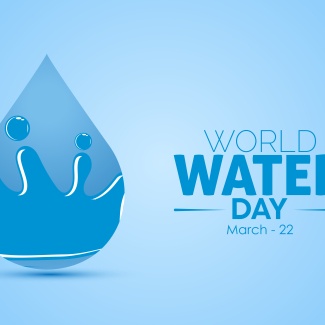
See how NOAA science is safeguarding lives, economies, and a healthy water supply.
Water, society, and ecology
Water influences the intensity of climate variability and change. It is the key part of extreme events such as drought and floods . Its abundance and timely delivery are critical for meeting the needs of society and ecosystems.
Humans use water for drinking, industrial applications, irrigating agriculture, hydropower, waste disposal, and recreation. It is important that water sources are protected both for human uses and ecosystem health. In many areas, water supplies are being depleted because of population growth, pollution, and development. These stresses have been made worse by climate variations and changes that affect the hydrologic cycle.
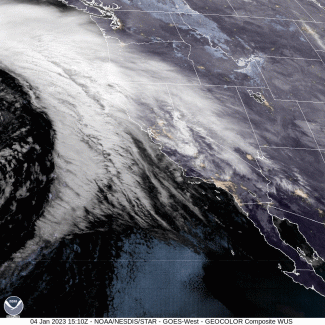
A series of atmospheric rivers starting in late December 2022 through mid-January 2023 dropped feet of rain and snow across California and other parts of the West Coast.
Water and climate change
Climate change is affecting where, when, and how much water is available. Extreme weather events such as droughts and heavy precipitation , which are expected to increase as climate changes, can impact water resources. A lack of adequate water supplies, flooding, or degraded water quality impacts civilization — now and throughout history. These challenges can affect the economy, energy production and use, human health, transportation, agriculture, national security, natural ecosystems , and recreation.
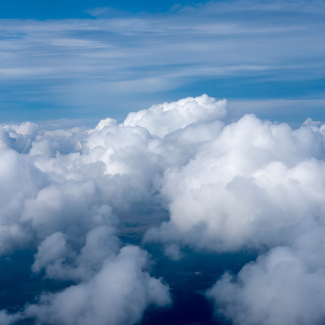
An airborne mission finds a global belt of particle formation is making clouds brighter.
EDUCATION CONNECTION
The water cycle impacts ecosystems, economies, and our daily lives. The resources in this collection help teachers guide their students beyond the classic water cycle diagram and through the complex social and environmental issues that surround water. The water cycle provides the opportunity to explore the nature of science using models and empirical evidence.
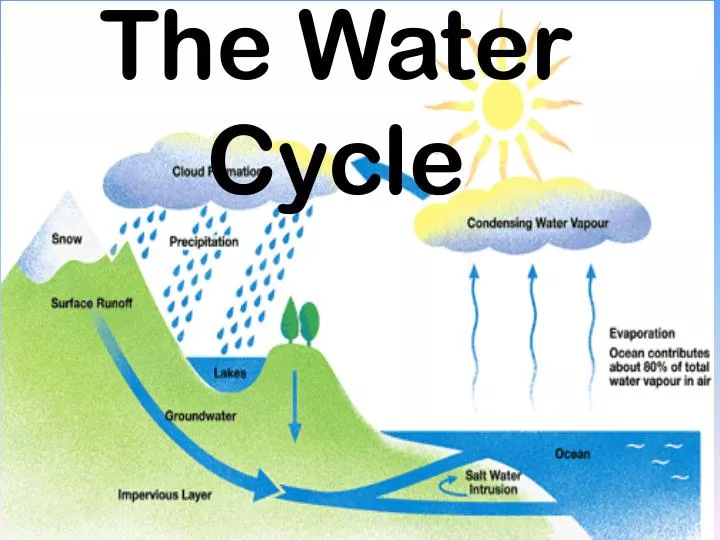
The Water Cycle
Sep 06, 2014
3.35k likes | 6.64k Views
The Water Cycle. The Water Cycle. Describes the movement of water on, in, and above the earth Water is always changing and moving from one place to another This cycle is made up of a few main parts: Precipitation Infiltration Runoff Transpiration Evaporation Water Vapor Condensation
Share Presentation
- water vapor
- water cycle
- liquid water
- gas water vapor
- gas called water vapor

Presentation Transcript
The Water Cycle • Describes the movement of water on, in, and above the earth • Water is always changing and moving from one place to another • This cycle is made up of a few main parts: • Precipitation • Infiltration • Runoff • Transpiration • Evaporation • Water Vapor • Condensation • Collection
What is the water cycle? • The repeating change of water on the Earth creates a cycle • As water goes through its cycle, it can be a solid (ice), a liquid (water), or a gas (water vapor) • Ice can change to become water or water vapor • Water can change to become ice or water vapor • Water vapor can change to become ice or water.
Precipitation • Happens when the temperature and the atmospheric pressure are right • The small droplets of water in clouds form larger droplets and precipitation occurs. The raindrops fall to earth. • Occurs when so much water has condensed that the air cannot hold it anymore • The clouds get heavy and water falls back to the earth in the form of rain, hail, sleet or snow • Click the speaker below to hear rain falling
Forms of Precipitation • Rain: Sleet: • Snow: Hail:
Infiltration • Important process where • rain water soaks into the • ground, through the soil and underlying rock layers • The flow of water from the • ground surface into the ground • Once infiltrated, the water • becomes soil moisture or • groundwater
Groundwater Flow • Movement of water underground is called groundwater flow • Groundwater slowly moves through the spaces and cracks between the soil particles on its journey to lower elevations
Runoff • The movement of land water to the oceans, mainly in the form of rivers, lakes, and streams • Consists of precipitation that neither evaporates, transpires nor penetrates the surface to become groundwater • Excess runoff can lead to flooding, which occurs when there is too much precipitation
Transpiration • Process that happens through plants • As plants absorb water from the soil, the water moves from the roots through the stems to the leaves • Once the water reaches the leaves, some of it evaporates from the leaves, adding to the amount of water vapor in the air.
Evaporation • The process where a liquid, in this case water, changes from its liquid state to a gaseous state. • The sun heats up water in rivers or lakes or the ocean and turns it into vapor or steam. • The water vapor or steam then leaves the river, lake, or ocean and goes into the air.
Water Vapor • Water in its gaseous state-instead of liquid or solid (ice) • Totally invisible • Extremely important to the weather and climate • Without out it, there would be no clouds or rain or snow • All of the water vapor that evaporates from the surface of the Earth eventually returns as precipitation - rain or snow
Condensation • Formation of liquid drops from water vapor • Occurs when a parcel of rising air expands and cools • Responsible for the formation of clouds • These clouds may produce precipitation, which is the primary route for water to return to the Earth's surface within the water cycle
Collection • When water falls back to earth as precipitation, it may fall back in the oceans, lakes or rivers or it may end up on land • When it ends up on land, it will either soak into the earth and become part of the “ground water” that plants and animals use to drink. • It may run over the soil and collect in the oceans, lakes or rivers where the cycle starts all over again.
How Do These Changes Happen? • Adding or subtracting heat makes the cycle work. • If heat is added to ice, it melts. If heat is added to water, it evaporates. • Evaporation turns liquid water into a gas called water vapor. • If heat is taken away from water vapor, it condenses. • Condensation turns water vapor into a liquid. • If heat is taken away from liquid water, it freezes to become ice.
Why the water cycle is important • Humans use water for drinking, respiration, perspiration, and elimination of wastes are all part of this cycle • Large amounts of water are needed for most economic activities: agriculture and mining, food processing, manufacturing • Lakes and rivers provide towns and cities with a means of discharging wastes
Why the Water Cycle is Important… Continued • Generation of electricity from thermal power plants • Waterways provide transportation • Recreational activities • Some people view the rivers and large lakes of this country as a part of their own identity • AND MUCH MORE!!!
Watch This Video To Learn More About The Water Cycle! Click the link below http://www.youtube.com/watch?v=_1oCoKj7b2o
You can sing along! Click the link below to sing about the water cycle. http://www.teachertube.com/view_video.php?viewkey=53bdf2518c53ddf3bce6
The Summary of the Hydrologic Cycle • The water cycle is called the hydrologic cycle. In the hydrologic cycle, water from oceans, lakes, swamps, rivers, plants, and even you, can turn into water vapor. • Water vapor condenses into millions of tiny droplets that form clouds. • Clouds lose their water as rain or snow, which is called precipitation. • Precipitation is either absorbed into the ground or runs off into rivers. • Water that was absorbed into the ground is taken up by plants. • Plants lose water from their surfaces as vapor back into the atmosphere. • Water that runs off into rivers flows into ponds, lakes, or oceans where it evaporates back into the atmosphere. • The cycle continues.
Now it’s your turn! Lets label the Water Cycle together! Condensation Evaporation Precipitation Runoff Infiltration Groundwater flow
Bibliography • The Water Cycle. Enchanted Learning. 1999-2008. http://www.enchantedlearning.com/subjects/astronomy/planets/earth/watercycle.shtml • Water Cycle. Wikipedia. 2008. http://en.wkipedia.org/wiki/water_cycle • The Water Cycle. DLTK’s Sights. 1998-2007. http://www.kidzone.ws/water/ • You Tube. http://www.youtube.com/
- More by User
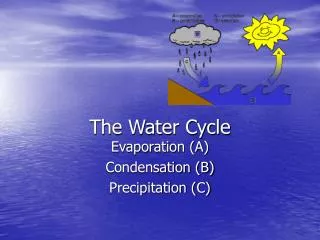
The Water Cycle. Evaporation (A) Condensation (B) Precipitation (C). How old is your water?. The water in your glass may have fallen from the sky as rain just last week, but the water itself has been around pretty much as long as the earth has!
502 views • 11 slides

The Water Cycle. Or The Hydrologic Cycle.
582 views • 42 slides

The Water Cycle. Water Cycle. Evaporation is the process in which water changes from liquid to vapor. Condensation is the process in which water vapor in the atmosphere becomes liquid. Precipitation is the water that falls from clouds.
326 views • 8 slides

The water cycle
The water cycle. By: Polly couch , Sarah Roark , And Kara pace. . What is the water cycle?.
297 views • 9 slides

The Water Cycle. Water cycles between the oceans, atmosphere and land. All living organisms require water . A. Water enters the atmosphere as water vapor , a gas, when water evaporates from the ocean or other bodies of water.
367 views • 8 slides

The Water Cycle. Vocabulary. All images courtesy of Microsoft Clip Art and Google Images under Creative Common Licensing. Evaporation. t he energy from the Sun heats up the water bodies on Earth This causes water to evaporate from the surface of these water bodies. .
362 views • 10 slides

The Water Cycle. Precipitation, Evaporation, Transpiration, Condensation. Vocabulary. atmosphere hydrosphere precipitation evaporation Transpiration – process by which water evaporates from green plants/trees condensation Percolation - the movement of water through the soil.
366 views • 10 slides

The Water Cycle . By: Niamh Reilly, Chloe Hanna, Chloe Silke. The water cycle .
334 views • 20 slides

The Water Cycle. Chapter 11-1. The Water Cycle. Water Cycle. Thirstin's Water Cycle Animation. Almost all the water on Earth is salt water (97%). Of the three percent that is fresh water, 76% is frozen in the ice caps at the poles. Water on the Earth.
778 views • 13 slides

The Water Cycle. By: Mrs. Rios. What are clouds?. A cloud is a collection of tiny water drops or ice crystals in the air. - Precipitation falls from the clouds. However not all clouds bring precipitation. -There are different types of clouds. Stratus clouds.
819 views • 17 slides

THE WATER CYCLE
THE WATER CYCLE. By: Dominic A. Cabriga. INTRODUCTION. Have you ever wondered looking outside wondering where did the water go? Or how the rain started? It`s all because of THE WATER CYCLE. EVAPORATION. The first step of THE WATER CYCLE.
332 views • 6 slides

The Water Cycle.
175 views • 1 slides

The Water Cycle . Did you know that the total amount of the earth’s water does not change? Did you know that the rain is actually water from the ocean?. Evaporation. The transformation of water from a liquid to a gas Just like we learned in the states of water!
207 views • 8 slides

The Water Cycle. Water on Planet Earth. The Water Cycle. Water Molecule Cycle Time ~ 1 year. The Water Cycle. Water Covers 2 / 3 of Our Planet. BUT 97% is Salty Water Of the 3% Fresh Water: 2% is frozen in ice Only 1% is available for Drinking & growing crops. Polar Glaciers.
447 views • 11 slides

The Water Cycle!!!
The Water Cycle!!!. Febuary 2012 By C aroline B arbieri. Evaporation. Evaporation is when a puddle shrinks as water evaporates into the air. Water also evaporates from lakes, oceans, and rivers. The warmer the air, the faster it evaporates. When the sun heats up water it evaporates.
320 views • 6 slides

THE WATER CYCLE. By, Bo0. EVAPORATION.
216 views • 9 slides

The Water Cycle. What do we use water for?. Drinking Shower/Wash Brush Teeth Laundry Toilet Cleaning. How do we get water in space?. We take it!. Water Recycling on ISS. VIDEO.
342 views • 12 slides

The Water Cycle. Cait Cohen and Chelsea Carleton. How Is Water Cycled in the Biosphere?. Hydrologic cycle/water cycle Collects, purifies, distributes earth’s supply of water Powered by the sun and gravity Main processes Evaporation Transpiration Condensation Precipitation Infiltration
438 views • 7 slides

The Water Cycle. Mr. Edwards Fifth Grade January 25, 2007. What will we learn?. What is the water cycle? Why is it important? How does water move around our world? What can we do to protect earth’s water?. What is the water cycle?.
397 views • 8 slides

The Water Cycle. Rafael Antonakakis.
250 views • 1 slides

The Water Cycle. Micah Townsley. Today’s Objectives. You will be able to sketch and label the water cycle You will be able to explain the processes in the water cycle You will be able to explain how pollution affects the water cycle. Definition. 1. Nature’s Water Cycle :
162 views • 12 slides

Draw lines to connect the parts of the water cycle to a description of the part. Rain, Snow, Sleet, Hail. THE WATER CYCLE. EVAPORATION. Water vapor turning to liquid. CONDENSATION. Water flowing on the surface of the land. PRECIPITATION. INFILTRATION. Plants are needed.
454 views • 34 slides

- Why Does Water Expand When It Freezes
- Gold Foil Experiment
- Faraday Cage
- Oil Drop Experiment
- Magnetic Monopole
- Why Do Fireflies Light Up
- Types of Blood Cells With Their Structure, and Functions
- The Main Parts of a Plant With Their Functions
- Parts of a Flower With Their Structure and Functions
- Parts of a Leaf With Their Structure and Functions
- Why Does Ice Float on Water
- Why Does Oil Float on Water
- How Do Clouds Form
- What Causes Lightning
- How are Diamonds Made
- Types of Meteorites
- Types of Volcanoes
- Types of Rocks
Water Cycle
What is the water cycle.
Water cycle, also known as the hydrologic cycle, involves a series of stages that show the continuous movement and interchange of water between its three phases – solid, liquid, and gas, in the earth’s atmosphere. The sun acts as the primary source of energy that powers the water cycle on earth. Bernard Palissy discovered the modern theory of the water cycle in 1580 CE.
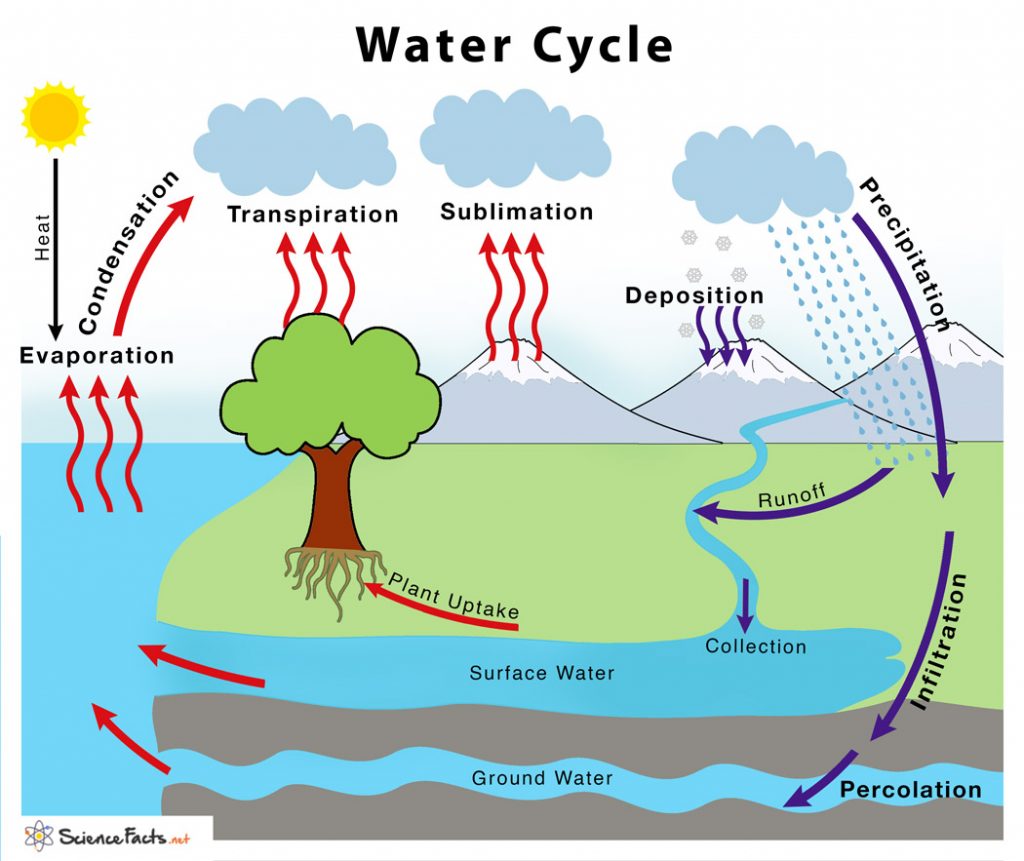
Steps of the Water Cycle: How does it Work
1. Change from Liquid to Gaseous Phase – Evaporation and Transpiration
The heat of the sun causes water from the surface of water bodies such as oceans, streams, and lakes to evaporate into water vapor in the atmosphere. Plants also contribute to the water cycle when water gets evaporated from the aerial parts of the plant , such as leaves and stems by the process of transpiration.
2. Change from Solid to Gaseous Phase – Sublimation
Due to dry winds, low humidity, and low air pressure, snow present on the mountains change directly into water vapor, bypassing the liquid phase by a process known as sublimation.
3. Change from Gaseous to Liquid Phase – Condensation
The invisible water vapor formed through evaporation, transpiration, and sublimation rises through the atmosphere, while cool air rushes to take its place. This is the process of condensation that allows water vapor to transform back into liquid, which is then stored in the form of clouds.
Sometimes, a sudden drop in atmospheric temperature helps the water vapors to condense into tiny droplets of water that remain suspended in the air. These suspended water droplets get mixed with bits of dust in the air, resulting in fog.
4. Change from Gaseous to Liquid and Solid Phase – Precipitation and Deposition
Wind movements cause the water-laden clouds to collide and fall back on the earth’s surface through precipitation, simply known as rain. The water that evaporated in the first stage thus returns into different water bodies on the earth’s surface, including the ocean, rivers, ponds, and lakes. In regions with extremely cold climate with sub-zero temperatures, the water vapor changes directly into frost and snow bypassing the liquid phase, causing snowfall in high altitudes by a process known as the deposition.
5. Return of the water back into the underground reserve – Runoff, Infiltration, Percolation, and Collection
The water that falls back on the earth’s surface moves between the layers of soil and rocks and is accumulated as the underground water reserves known as aquifers. This process is further assisted by earthquakes, which help the underground water to reach the mantle of the earth. Some amount of precipitated water flows down the sides of mountains and hills to reach the water bodies, which again evaporates into the atmosphere. During volcanic eruptions, the underground water returns to the surface of the earth, where it mixes with the surface water bodies in order to continue the cycle.
Video: Water Cycle Explained
Why is the water cycle important.
The most crucial and direct impacts of the above process on earth include:
- Making fresh water available to plants and animals, including humans, by purifying the groundwater on earth. During the water cycle, the water evaporates, leaving behind all the sediments and other dust particles. Similarly, for the sustenance of marine life, the saline range of all salt water bodies is kept within a certain permissible limit through infiltration.
- Allowing even distribution of water on all surfaces of the earth. Water is temporarily stored as clouds in the atmosphere, whereas surface water bodies such as rivers and oceans, together with underground water, form the major permanent water reserves.
- Causing a cooling effect on earth due to evaporation of water from surface water bodies, which help to form clouds that eventually precipitate down in the form of rain. This way water cycle affects the weather and climate of the earth.
- Ensuring some other biogeochemical cycles , including those concerning oxygen and phosphorus, to continue in nature.
- Cleaning the atmosphere by taking-away dust particles, shoot, and bacteria , thus acting as a means to purify the air we breathe.
Human Impact on Water Cycle
Human activities adversely affect the water cycle in the two following ways:
a) Deforestation : Plants play an important role in the water cycle by preventing soil erosion and thus helps to increase the groundwater level of the earth. Also, plants contribute by absorbing water from the soil, which is then released back to the atmosphere during transpiration. Deforestation adversely affects both the above processes, thus breaking the flow of the water cycle.
b) Pollution : Burning of fossil fuels acts as the major source of air pollution releasing toxic gases into the atmosphere, leading to the formation of smog and acid rain . Water from farmlands run off to the nearest water bodies carrying chemicals such as insecticides and pesticides along with them, thus causing water pollution. The presence of excessive contaminants in the atmosphere and water bodies decreases the evaporation and condensation on earth, thus adversely affecting the water cycle.
Ans. Cellular respiration is the process by which organisms take up oxygen in order to breathe and digest food. Water is utilized for breaking large molecules that release energy in the form of ATP , while in a subsequent step the water molecules are released back into the cell, which in turn returns to the atmosphere, thus affecting the water cycle.
Ans. Rivers contain more water than streams and thus contribute more to the formation of water vapor through evaporation compared to a stream.
- Water Cycle – Britannica.com
- The Water Cycle – Khanacademy.org
- Water Cycle – Noaa.gov
- What Is The Hydrologic Cycle? – Worldatlas.com
- What is the Water Cycle? – Earth.com
- The Water Cycle – Coastgis.marsci.uga.edu
Article was last reviewed on Wednesday, May 17, 2023
Related articles

One response to “Water Cycle”
The first part of the water cycle is of course evaporation and transportation, but I don’t want to focus on that, I want to focus on the 2nd step which is sublimation. Sublimation is when snow or hail, or sleet falls down on a mountain and it quickly turns into water vapor by passing the liquid phase.Now lets skip to the last phase which is RIPC
Leave a Reply Cancel reply
Your email address will not be published. Required fields are marked *
Save my name, email, and website in this browser for the next time I comment.
Popular Articles

Join our Newsletter
Fill your E-mail Address
Related Worksheets
- Privacy Policy
© 2024 ( Science Facts ). All rights reserved. Reproduction in whole or in part without permission is prohibited.

- DIGITAL MAGAZINE
MOST POPULAR
The Water Cycle!
Earth has been recycling water for over 4 billion years….
Pour yourself a glass of water and take a sip. Did you know that the water you’ve just swallowed is the same water that wooly mammoths, King Tutankhamun and the first humans drank? That’s because Earth has been recycling water for over 4 billion years !
The world’s water moves between lakes, rivers, oceans, the atmosphere and the land in an ongoing cycle called – you guessed it! – the water cycle . As it goes through this continuous system, it can be a liquid (water), a gas (vapour) or a solid (ice).
So, are all you budding young geographers ready to learn some splashing new facts? Then join NG KiDS as we take a look at the different stages of the wonderful water cycle…
Evaporation
Energy from the sun heats up the surface of the Earth, causing the temperature of the water in our rivers, lakes and oceans to rise. When this happens, some of the water “evaporates” into the air, turning into a gas called “ vapour “. Plants and trees also lose water to the atmosphere through their leaves. This process is known as “ transpiration “.
Condensation
As water vapour rises up high into the sky, it cools and turns back into a liquid, forming clouds. This process is called “ condensation “. Currents high up in the air move these clouds around the globe.

The water cycle is also known as the “ hydrologic cycle “.
Precipitation.
When too much water has condensed, the water droplets in the clouds become too big and heavy for the air to hold them. And so they fall back down to Earth as rain, snow, hail or sleet, a process known as “ precipitation “.
The fallen precipitation is then “collected” in bodies of water – such as rivers, lakes and oceans – from where it will eventually evaporate back into the air, beginning the cycle all over again. How it is collected, depends on where it lands…
- Some will fall directly into lakes, rivers or the sea, from where it will evaporate and begin the cycle all over again.
- If the water falls on vegetation, it may evaporate from leaves back into the air, or trickle down to the ground. Some of this water may then be taken up by the plant roots in the earth.
- In cold climates, the precipitation may build up on land as snow, ice or glaciers. If temperatures rise, the ice will melt to liquid water and then soak into the ground, or flow into rivers or the ocean.
Water that reaches land directly may flow across the ground and collect in the oceans, rivers or lakes. This water is called “ surface run-off “. Some of the precipitation will instead soak (or “infiltrate”) into the soil, from where it will slowly move through the ground until eventually reaching a river or the ocean.
And there you have it, gang – the ongoing water cycle !
Water can change from a solid to a gas, without becoming a liquid first. Through this process of “ sublimation ” our planet”s ice can evaporate directly into the air without melting!
Be sure to check out our water conservation primary resource . Great for teachers, homeschoolers and parents alike, show children 25 ways to help keep our oceans, rivers and streams clean…
Illustration: Getty Images UK
Leave a comment.
Your comment will be checked and approved shortly.
WELL DONE, YOUR COMMENT HAS BEEN ADDED!
i like it cool
cool love ng kids
I love this website I always use it for school.
very good love it
So interesting
Wow wowowowowowwow
Wow this is really interesting to know. I thought i new all about this topic but this website taught me much more. Keep up the good work!
AMAZING THIS IS SOOOOO COOL WATER IS AMAZING
water is cool
thanks for the info
This avatar is so cute
This is so cute
hola amigos
This is cool
How is it possible that the water you are drinking today, is the same water the dinoaurs drank??
This helped me so much with my assignment. Thank you!
This is like Wikipedia type stuff
wow, thank you guys you have helped me a lot with my writing i had to do, i have enjoyed learning more about the water cycle and how it works and what happens thank you again.
informative
This is soooo good! I have learnt so much from National Geographic and National Geographic Kids!!!
show me somthing helpfull
really help full
This is great for kids
Thank you sooo much! I'm always late to do my homework. This website was really easy to understand and I got my homework done is ONE NIGHT! Which I must say is very unlikely of me! Thank u again :)
At school i am learning about the water cycle and this website is so great to get facts of like water that you have drunk dinosaurs have actually drank like OMG thank you so much national geographic for creating this website i bet this has hepled a lot of kids. by the way am 12 in highschool Regards, Milla Randall
Thanks for so much information
I'm so much smarter now
I never knew that solid can turn in to gas without melting
I know the water cycle but I did not know that the planet has been recycling water for over 4 billion years.
I like National Geographic kids it has lots and of facts.
I think the story of the water cycle is amazing
This is cool!
LOL! hehehehehehehheheheh nope im not a stereotype
i did not know that.
hhhhhhhhhhi
I loved it I learned so much!
I love it! It helped me learn! About the water cycle I didnt know it was that completely amazing what water dose.
I have learned it before and its great to know!
fun and interesting to learn
You guys are the best.I never knew there was a water cycle
COOL ,you guy really did a good job
Thanks was a some Epic
I learnt this at senior school
awesommmmmmmmmmmeeeeeee
very good website
You are smart i like people who are smart nice :)
I didnt know the water cycle was that amazing
I love this website!!!!! who ever the people are that made national geographic website, your amazing you make one off the best websites ever!!!
INTERESTING!!!!!!!!!!!!!!!!!!!!!!!!!!!!!!!!!!!!!!!!!
Interesting
Save nature
This is a good because you come to learn from others.
3 cheers for our water cycle!
this website is epic it helps with everything and i dont know what i would do without it thanks for reading!!!
I love water fishy would die if theres no water
Water cycle will be the king lol
Water cycle are best it makes the earth all healthy
Water cycle is awesome it makes plants healthy
Water cycle is awesome I love it!!!
this was AMAZING and full of info!! THANK YOU!! :)
I did a water cycle song at shool
LOVE GIRAFFES !!! SENICE TOO ANIMALS TOO WATER ASWELL I LOVE ANIMAL JAM
I LOVE ANIMALS AND ESPESIALY GIRRAFES
weird but cool!
Water cycle = AWESOME
The water cycle is awesome!!!!!!!!!!!
thats amazing
Thats so awesome
I love the water-cycle! I also love the diagram!!! SO AWESOME!!! I need to read this another time!!!
that was interesting
I really like how you explain what is a water cycle
I never knew what I know now.
AWESOME !!!!!!!!!!!!!!!!!! I LOVE NATIONAL GEOGRAPHIC IT IS ALL IN CAPITALS BECAUSE MY KEY BOARD IS BROKEN
I love the water cycle and it was good to learn new things.
I didnt know that much! Good Facts!
Cool! never know it worked like that! Good animation!
cool i didnt know water worked like that
wow!!!!! this will help with my scool worl!!!!!
cool. I didnt know the water cycle worked like that!
cool i love the word evaporation
Very interesting and awsome!
I like the graphic explains the water cycle so well.
I learnt about this at school... And it is really interesting
I liked the facts about the water cycle!
This informmation is really interesting!
CUSTOMIZE YOUR AVATAR
More like nature.
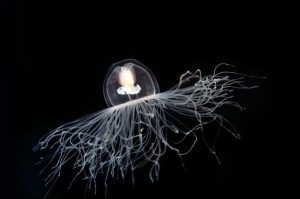
Science with Dr Karl: Immortal Jellyfish!
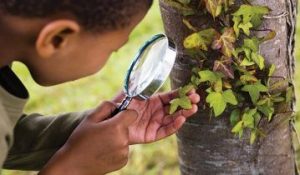
Scavenger Hunt!

10 ways to love the planet back (a parent special!)

How to save the planet: a kids’ guide!

Sign up to our newsletter
Get uplifting news, exclusive offers, inspiring stories and activities to help you and your family explore and learn delivered straight to your inbox.
You will receive our UK newsletter. Change region
WHERE DO YOU LIVE?
COUNTRY * Australia Ireland New Zealand United Kingdom Other
By entering your email address you agree to our Terms of Use and Privacy Policy and will receive emails from us about news, offers, activities and partner offers.
You're all signed up! Back to subscription site
Type whatever you want to search
More Results

You’re leaving natgeokids.com to visit another website!
Ask a parent or guardian to check it out first and remember to stay safe online.

You're leaving our kids' pages to visit a page for grown-ups!
Be sure to check if your parent or guardian is okay with this first.
- Biology Article
Water Cycle

What is the Water Cycle? Water Cycle Diagram Stages of Water Cycle Implications of Water Cycle Frequently Asked Questions
What is the Water Cycle?
The water cycle, also known as the hydrologic cycle or the hydrological cycle, describes the continuous movement of water on, above and below the surface of the Earth.
Water Cycle Diagram
During this process, water changes its state from one phase to another, but the total number of water particles remains the same. In other words, if it were possible to collect and boil 100 gms of water, it will still retain a mass of 100 gms as steam. Likewise, if 100 gms of steam is collected and condensed, the resultant water would still weight 100 gms.
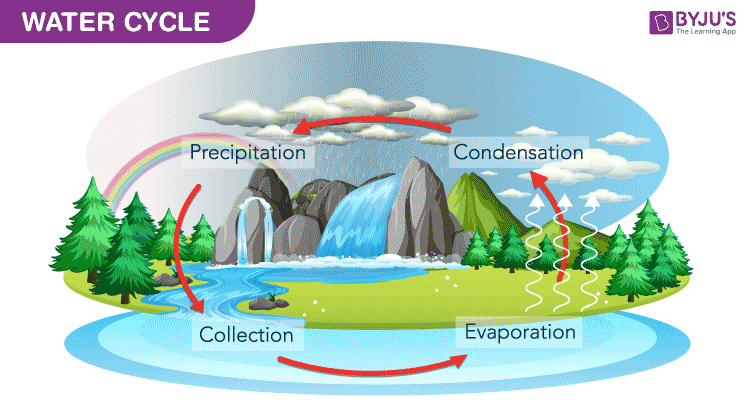
Water changes its state through a variety of processes from evaporation, melting and freezing, to sublimation, condensation, and deposition. All these changes require the application of energy.
Stages of Water Cycle
There are many processes involved in the movement of water apart from the major steps given in the above water cycle diagram. Listed below are different stages of the water cycle.
1. Evaporation
The sun is the ultimate source of energy, and it powers most of the evaporation that occurs on earth. Evaporation generally happens when water molecules at the surface of water bodies become excited and rise into the air. These molecules with the highest kinetic energy accumulate into water vapour clouds. Evaporation usually takes place below the boiling point of water. Another process called evapotranspiration occurs when evaporation occurs through the leaves of plants. This process contributes to a large percentage of water in the atmosphere.
2. Sublimation
Sublimation occurs when snow or ice changes directly into water vapour without becoming water. It usually occurs as a result of dry winds and low humidity. Sublimation can be observed on mountain peaks, where the air pressure is quite low. The low air pressure helps to sublimate the snow into water vapour as less energy is utilised in the process. Another example of sublimation is the phase where fog bellows from dry ice. On earth, the primary source of sublimation is from the ice sheets covering the poles of the earth.
3. Condensation
The water vapour that accumulated in the atmosphere eventually cools down due to the low temperatures found at high altitudes. These vapours become tiny droplets of water and ice, eventually coming together to form clouds.
4. Precipitation
Above 0 degrees centigrade, the vapours will condense into water droplets. However, it cannot condense without dust or other impurities. Hence, water vapours attach itself on to the particle’s surface. When enough droplets merge, it falls out of the clouds and on to the ground below. This process is called precipitation (or rainfall). In particularly cold weather or extremely low air pressure, the water droplets freeze and fall as snow or hail.
5. Infiltration
Rainwater gets absorbed into the ground through the process of infiltration. The level of absorption varies based on the material the water has seeped into. For instance, rocks will retain comparatively less water than soil. Groundwater can either follows streams or rivers. But sometimes, it might just sink deeper, forming aquifers.
If the water from rainfall does not form aquifers, it follows gravity, often flowing down the sides of mountains and hills; eventually forming rivers. This process is called runoff. In colder regions, icecaps form when the amount of snowfall is faster than the rate of evaporation or sublimation. The biggest icecaps on earth are found at the poles.
All the steps mentioned above occur cyclically with neither a fixed beginning nor an end.
Also Read: Back to the Oceans
Implications of Water Cycle
- The water cycle has a tremendous impact on the climate. For instance, the greenhouse effect will cause a rise in temperature. Without the evaporative cooling effect of the water cycle, the temperature on earth would rise drastically.
- The water cycle is also an integral part of other biogeochemical cycles.
- Water cycle affects all life processes on earth.
- The water cycle is also known the clean the air. For instance, during the process of precipitation, water vapours have to attach themselves on to particles of dust. In polluted cities, the raindrops, apart from picking up dust, also pick up water-soluble gas and pollutants as they fall from the clouds. Raindrops are also known to pick up biological agents such as bacteria and industrial soot particles and smoke.
Read more about the water cycle with diagram by registering @ BYJU’S Biology
- Biogeochemical cycles
- Oxygen Cycle
- Carbon Cycle
- Nitrogen Cycle
Frequently Asked Questions
What are the major 4 steps in the water cycle.
The major 4 steps are evaporation of water, then condensation, precipitation and collection. The sun evaporates water sources and contributes to the formation of water vapor. These water vapour accumulate in the atmosphere as clouds. The vapours condense into water droplets and when enough droplets merge, it falls out of the clouds as rain.
What is the difference between evaporation and condensation?
Evaporation is a process by which water changes into water vapour. Condensation is an opposite process by which water vapour is converted into tiny droplets of water.
Why is water cycle important?
Water cycle has a huge impact on determining the global climate. It is also an integral part of other biogeochemical cycles. It affects all life processes on Earth either directly or indirectly.

Put your understanding of this concept to test by answering a few MCQs. Click ‘Start Quiz’ to begin!
Select the correct answer and click on the “Finish” button Check your score and answers at the end of the quiz
Visit BYJU’S for all Biology related queries and study materials
Your result is as below
Request OTP on Voice Call
Leave a Comment Cancel reply
Your Mobile number and Email id will not be published. Required fields are marked *
Post My Comment
Hello fellow human creatures of Earth. This online service has provided me with much needed information.
This is helpful
Helpful to me
Super useful
It is useful for me
This really Helped me!!
Thank you for the valuable information.
Educational, thanks!
It’s really helpful for my child Thanks from heart and soul
IT is VERY USEFUL
It’s very useful thank you
- Share Share
Register with BYJU'S & Download Free PDFs
Register with byju's & watch live videos.

- Water Cycle
Weather & Climate
Societal applications, exploring the water cycle.

This lesson plan is intended for teachers to use with their upper elementary and middle school students to learn about the water cycle and the forces that drive it. The emphasis in this lesson will be on having students understand the processes that take place in moving water through Earth’s system.
Download Resources:
(right-click -> save as)
- Teacher Guide (pdf)
- Teacher Demonstration Directions (pdf)
- Student Capture Sheet (pdf)
- Presentation (ppt)
- Pre and Post Assessment (pdf)
Please Contact Us to Receive the Answer Keys (please note, we can only provide the answer keys for "GPM Original" lesson plans)
Got any suggestions?
We want to hear from you! Send us a message and help improve Slidesgo
Top searches
Trending searches
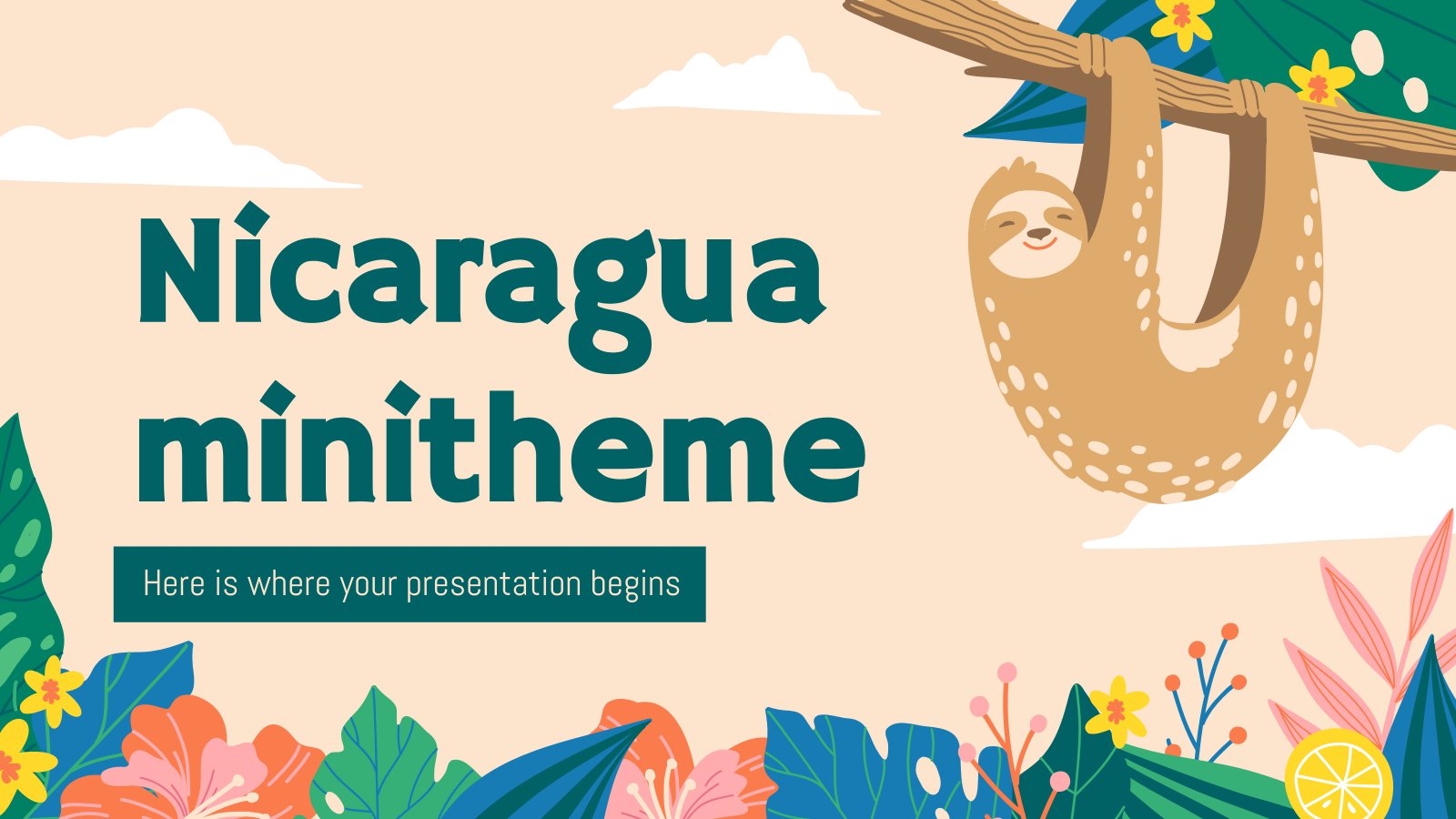
24 templates
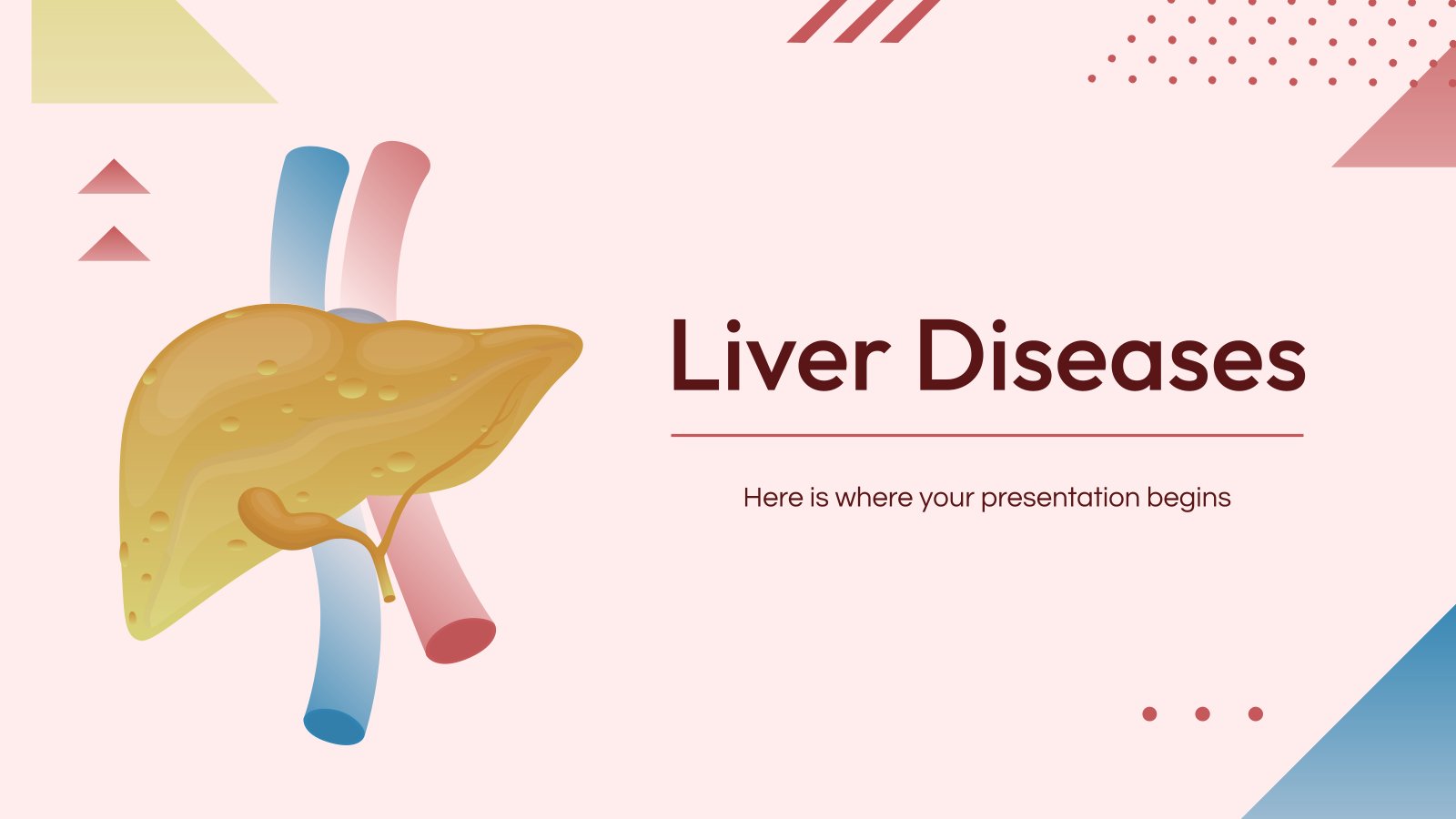
10 templates

20 templates

education technology
181 templates

23 templates

biochemistry
37 templates
Water Cycle Infographics
Free google slides theme and powerpoint template.
Where does all the water in the rivers go? To the ocean! But wait, there’s litres and litres of water flowing to the oceans every second, how is it that they don’t rise? Where does all the water go? Well, here is when the sun comes into play, it evaporates lots of water and turns it into clouds! Then, it’s time for precipitation: when clouds get cold, they condense and turn steam into liquid water, that’s rain! Explain the water cycle with these illustrative infographics!
Features of these infographics
- 100% editable and easy to modify
- 31 different infographics to boost your presentations
- Include icons and Flaticon’s extension for further customization
- Designed to be used in Google Slides, Microsoft PowerPoint and Keynote
- 16:9 widescreen format suitable for all types of screens
- Include information about how to edit and customize your infographics
How can I use the infographics?
Am I free to use the templates?
How to attribute the infographics?
Attribution required If you are a free user, you must attribute Slidesgo by keeping the slide where the credits appear. How to attribute?
Related posts on our blog.

How to Add, Duplicate, Move, Delete or Hide Slides in Google Slides

How to Change Layouts in PowerPoint

How to Change the Slide Size in Google Slides
Related presentations.

Premium template
Unlock this template and gain unlimited access

the water cycleBy: | Presentation by sejalsingla013
Toto, we're not in kansas anymore....
A server error occured and unexplained things are happening around us.
- emaze for Business
- emaze for Education
- Presentation
- Photo Album
- Digital Card
- this one opens the old contactus popup which no longer works
- Get Inspired

- Learning Management System

IMAGES
VIDEO
COMMENTS
The water cycle describes the continuous movement of water on, above, and below the surface of the Earth. It is driven by energy from the sun and involves the processes of evaporation, transpiration, condensation, precipitation, and runoff. Water is evaporated from bodies of water by the sun, rises into the atmosphere as water vapor, cools and ...
1 The Water Cycle 6.2E.1 Explain the water cycle and the relationship to landforms and weather. 2 3 Turn to page 15 Answer Numbers 1-3 on your own. Warm Up 4 It is the movement of water between the atmosphere, land, oceans and even living things. Rain, snow, ice and hail fall to earth due to gravity. What is the Water Cycle 5 Water (H.
The water cycle is: The transferring of water from the Earth's surface to the atmosphere and back, in a never-ending cycle. It is also known as the "hydrologic cycle". . . But one thing about water doesn't change. There is only a certain amount of water on Earth—no more, no less—and that total doesn't change.
The water cycle is the endless process that connects all of that water. It joins the Earth's oceans, land, and atmosphere. The Earth's water cycle began about 3.8 billion years ago when rain fell on a cooling Earth, forming the oceans. The rain came from water vapor that escaped the magma in the Earth's molten core into the atmosphere.
Evaporation, one of the major processes in the cycle, is the transfer of water from the surface of the Earth to the atmosphere.By evaporation, water in the liquid state is transferred to the gaseous, or vapour, state.This transfer occurs when some molecules in a water mass have attained sufficient kinetic energy to eject themselves from the water surface.
The water cycle describes how water is exchanged (cycled) through Earth's land, ocean, and atmosphere. Water always exists in all three phases, and in many forms—as lakes and rivers, glaciers and ice sheets, oceans and seas, underground aquifers, and vapor in the air and clouds. Evaporation, Condensation, and Precipitation. The water cycle consists of three major processes: evaporation ...
The water cycle is important in itself, and patterns of water cycling and rainfall have major effects on Earth's ecosystems. However, rainfall and surface runoff also play important roles in the cycling of various elements. These include carbon, nitrogen, phosphorus, and sulfur. In particular, surface runoff helps move elements from terrestrial ...
The Water Cycle and Climate The water cycle has a dramatic influence on Earth's climate and ecosystems. Climate is all the weather conditions of an area, evaluated over a period of time. Two weather conditions that contribute to climate include humidity and temperature. These weather conditions are influenced by the water cycle.
The water cycle is the path that all water follows as it moves around Earth in different states. Liquid water is found in oceans, rivers, lakes—and even underground. Solid ice is found in glaciers, snow, and at the North and South Poles. Water vapor—a gas—is found in Earth's atmosphere. Water can be found all over Earth in the ocean, on ...
And so that in general is the water cycle. You have evaporation, it condenses into clouds, it eventually precipitates, and it keeps going, round and round and round. Now of course, there's others actors at play. You have things like plants. Plants will take up water from the upper soil, as far as the plant's roots go.
The water cycle is a fascinating process that involves the movement of water between different states and locations on Earth. In this article, you will learn how the water cycle works, what factors influence it, and how it affects weather and climate. This article is designed for middle school students who want to explore the science of Earth and space. Khan Academy is a nonprofit organization ...
The water cycle on Earth. Water is essential to life on Earth. In its three phases (solid, liquid, and gas), water ties together the major parts of the Earth's climate system — air, clouds, the ocean, lakes, vegetation, snowpack offsite link, and glaciers offsite link. The water cycle shows the continuous movement of water within the Earth and atmosphere.
See a day in the life of the water cycle.The sun rises, begins to heat the oceans, lakes and rivers and provide energy for plants to give off water vapor through transpiration.That vapor rises into the atmosphere to form clouds, which can be moved by the wind over long distances, and eventually resulting in rain or snow. That precipitation infiltrates into the ground, or runs off the land to ...
The water cycle is the journey water takes as it moves from the land to the sky and back again. Have a look at the stages of the water cycle. The water cycle follows a cycle of evaporation ...
Presentation Transcript. The Water Cycle. The Water Cycle • Describes the movement of water on, in, and above the earth • Water is always changing and moving from one place to another • This cycle is made up of a few main parts: • Precipitation • Infiltration • Runoff • Transpiration • Evaporation • Water Vapor ...
Steps of the Water Cycle: How does it Work. 1. Change from Liquid to Gaseous Phase - Evaporation and Transpiration. The heat of the sun causes water from the surface of water bodies such as oceans, streams, and lakes to evaporate into water vapor in the atmosphere. Plants also contribute to the water cycle when water gets evaporated from the ...
The world's water moves between lakes, rivers, oceans, the atmosphere and the land in an ongoing cycle called - you guessed it! - the water cycle. As it goes through this continuous system, it can be a liquid (water), a gas (vapour) or a solid (ice). So, are all you budding young geographers ready to learn some splashing new facts? Then ...
The water cycle is also an integral part of other biogeochemical cycles. Water cycle affects all life processes on earth. The water cycle is also known the clean the air. For instance, during the process of precipitation, water vapours have to attach themselves on to particles of dust. In polluted cities, the raindrops, apart from picking up ...
Precipitation is a vital component of how water moves through Earth's water cycle, connecting the ocean, land, and atmosphere.Knowing where it rains, how much it rains and the character of the falling rain, snow or hail allows scientists to better understand precipitation's impact on streams, rivers, surface runoff and groundwater.Frequent and detailed measurements help scientists make ...
Exploring the Water Cycle. In this lesson, students will learn about the water cycle and how energy from the sun and the force of gravity drive this cycle. This lesson plan is intended for teachers to use with their upper elementary and middle school students to learn about the water cycle and the forces that drive it.
Then, it's time for precipitation: when clouds get cold, they condense and turn steam into liquid water, that's rain! Explain the water cycle with these illustrative infographics! Features of these infographics ... 31 different infographics to boost your presentations; Include icons and Flaticon's extension for further customization ...
Have you ever heard of the water cycle? Maybe you've heard the word evaporation or precipitation. These are stages in the water cycle! In The Water Cycle for...
Check out my latest presentation built on emaze.com, where anyone can create & share professional presentations, websites and photo albums in minutes. ... how are humans affecting water cycle? 1. Hydroelectricity- Most of the electricity is generated using hydro dams. Rivers must be dammed, which can affect the function of the river both ...